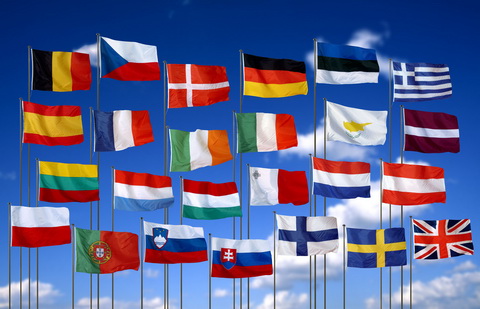European Integration and striving for energy
Alliance II: Non-Military Alliances and European Integration
 This kind of alliance is important in influencing both the rhetoric and reality related to energy alliances like Nord Stream. After World War II, Western European integration created a situation where economic power among states became greater than military conflict among states. I argue that the EU became a key factor that shaped some energy weaker states’ policies regarding commercial arrangements related to energy alliances like Nord Stream. The need to engage in non-military alliances as a compensation system for weaker states is based on the limits to the military power. Military power is not ultimate and faces limits. One key limit is the fact that the exercise of economic power is not always promoted by exercising military power (Melman 1988).
This kind of alliance is important in influencing both the rhetoric and reality related to energy alliances like Nord Stream. After World War II, Western European integration created a situation where economic power among states became greater than military conflict among states. I argue that the EU became a key factor that shaped some energy weaker states’ policies regarding commercial arrangements related to energy alliances like Nord Stream. The need to engage in non-military alliances as a compensation system for weaker states is based on the limits to the military power. Military power is not ultimate and faces limits. One key limit is the fact that the exercise of economic power is not always promoted by exercising military power (Melman 1988).
The energy crisis highlights the limits to military might and power. As a result of increasing industrialization and centralization found in urban societies, access to large scale energy resources becomes more important.
According to Melman the US had long been a state-capitalist society with a growing armed-services bureaucracy and as the American post-war global presence expanded, it naturally followed that superpower economic, political, and military agendas would be advanced and consolidated in tandem (ibid.).8 The limits to military approaches and the problems of small scale facing European states each have led countries like Sweden to enter civilian alliances. To a certain extent, the European Union is itself becoming a military alternative, but primarily it serves to balance the economic as opposed to military power of other states.
As a part of the so-called Triad (EU, Japan and NAFTA), the European Union has a central role in the world economy because it is the most developed and the most complex structured party among the major trade blocks which currently dominates the world economy. Despite it being the most ambitious project of multilateral economic governance, Hirst and Thompson recognized that the basic challenge the EU is facing is different articulations and perceptions of its future evolution which restricts its capacity for common external action (Hirst and Thompson 1999: 230).
Differences within the EU block can be important. Moreover, one can argue that the EU as an alliance is defined by its attempts to balance the power of other powerful parties (in my case Russia) on the one hand and its internal divisions regarding interests and perceptions on the other. How the EU balances economic power of Russia is crucially defined by the member states’ different perceptions of Russia. A big discrepancy between old and new member states’ perceptions of Russia and its energy power is an important obstacle in the EU’s attempts to balance Russia’s power.
At the perceptual or subjective level, the use of the EU to balance an exaggerated threat from Russia shows how economic alliances also are tied to perceptions. Despite this, states that are part of such alliances can use that reality to balance their energy reliance on a more powerful state or to put pressure on that more powerful state.
In sum, the non-military alliances represent an attempt to overcome the limits to military power and represent a way to extend state power by other than military means. Historically, the EU developed as a system to counterbalance the greater accumulations of power held by the United States, Russia, and key states in Asia like Japan.
. . .
Source book: Swedish Threat Perception of Nord Stream and the Dual State Energy Security Model: An Analysis of Realism, Resource Interests and Securitization. Author Dragica Suc
